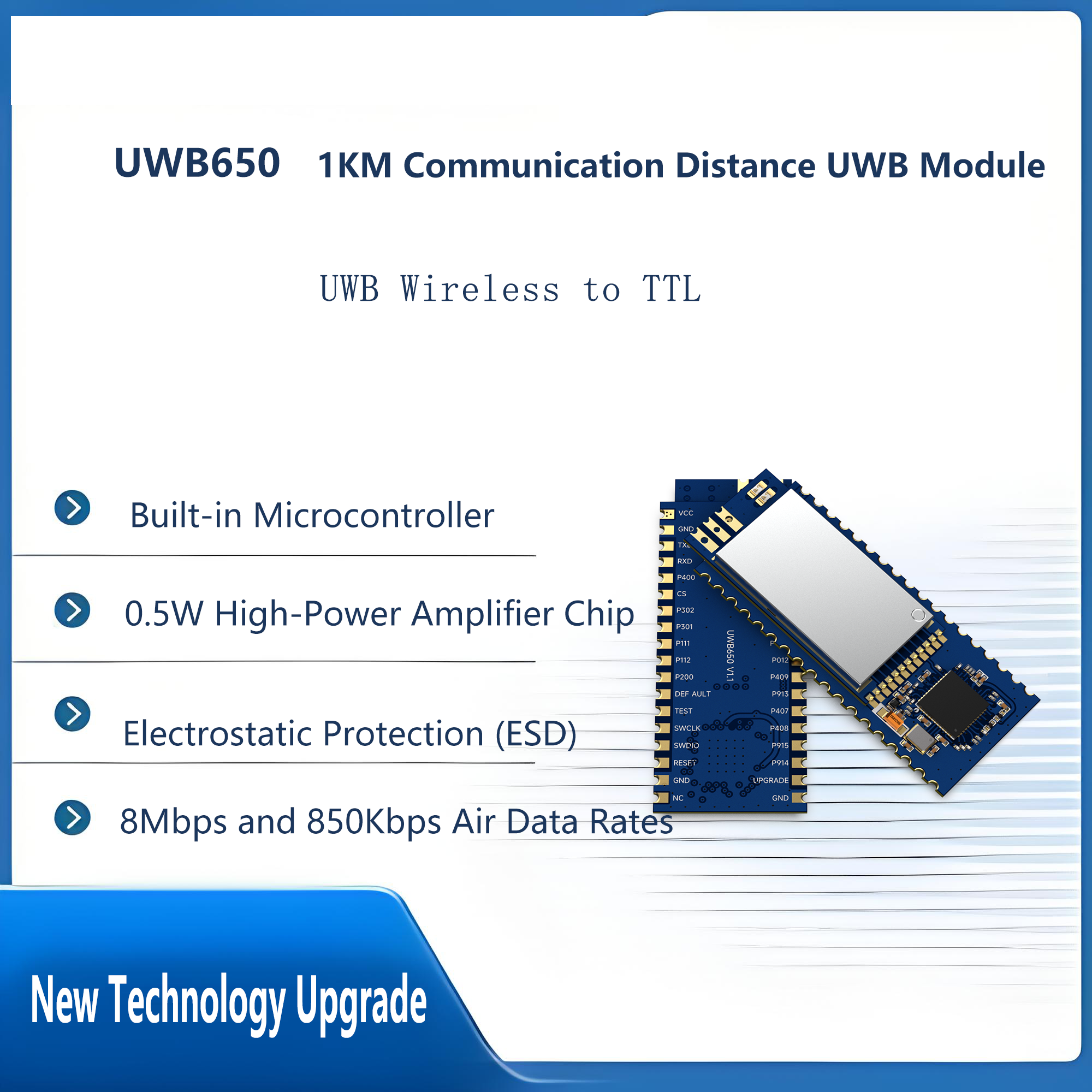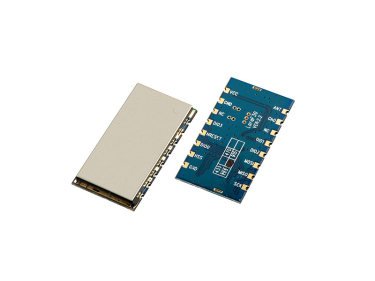Exploring the Unique Advantages of UWB Technology: Achieving High-Precision Positioning
UWB positioning technology is a method of precise location tracking using wireless signals. It determines the exact position of an object by measuring parameters such as the time of arrival, phase difference, and signal energy of ultra-wideband radio signals.
UWB positioning technology offers several advantages. Firstly, it provides high positioning accuracy, enabling precise localization at the millimeter level. Secondly, UWB has strong anti-interference capabilities, allowing it to maintain good positioning performance even in environments with multipath propagation and interference. Additionally, UWB technology has good penetration ability, enabling it to locate objects through certain obstacles.
A UWB positioning system is composed of UWB base stations and UWB tags.
In a UWB positioning system, a single tag interacts with three base stations to perform triangulation. Up to 30 tags can communicate with these three base stations simultaneously, enabling high-precision positioning and tracking of multiple targets.
Using the three-point planar positioning method for precise location calculation: In UWB and AoA positioning systems, the three-point planar positioning method is employed. By having three known base stations receive signals from an unknown tag, the system can accurately measure the time signal arrival, thereby achieving high-precision positioning.
A UWB positioning system can, within the coverage area of UWB base stations, work in conjunction with UWB tags and utilize the TDOA algorithm along with terminal display devices to accomplish complex tasks such as personnel positioning, monitoring, and tracking. This system enables real-time location and monitoring management of people and objects, achieving a positioning accuracy of 10 to 30 centimeters.
Bluetooth AoA (Angle of Arrival) and AoD (Angle of Departure) positioning use the same underlying technology. When using the Angle of Departure (AoD) method, the transmitting device contains a multi-antenna array that sends out a special direction-finding signal. Another device then uses this signal to calculate the direction from which the signal is received.
The UWB positioning system is generally divided into three layers: the positioning perception layer, the network transmission layer, and the positioning application layer. It primarily includes the following components: positioning engine server, smart terminal, switch, UWB base station, UWB tag, UWB module, and software interfaces
UWB Positioning Working Principle
Each positioning tag continuously transmits data frames using UWB pulses.
The UWB pulse bursts sent by the positioning tag are received by the positioning base stations.
Each positioning base station uses a highly sensitive short pulse detector to measure the time at which each data frame from the positioning tag arrives at the receiver's antenna.
The positioning engine refers to the calibration data sent by the tag to determine the time difference of arrival between different positioning base stations. It then calculates the tag's position using trilateration and optimization algorithms.
Multi-base station positioning commonly employs TDOA (Time Difference of Arrival) and TOA (Time of Arrival) algorithms.
The AoA positioning system architecture is divided into four layers: the object layer, the collection layer, the processing layer, and the presentation layer.
Object Layer: This includes the devices or objects being positioned, which interact with the system by sending signals.
Collection Layer: Composed of receiving devices (such as base stations), it is responsible for receiving signals from the object layer and measuring the Angle of Arrival (AoA) of the signals.
Processing Layer: This layer includes the positioning engine server, data server, and business server. The servers are responsible for location computation, data analysis, data validation, and other tasks.
Presentation Layer: This layer handles the initialization of system positioning data, business process management, user management, data queries, and more, all of which are managed through a web browser.
What are the differences between UWB positioning technology and Bluetooth AoA?
UWB and Bluetooth are communication technologies and standards, each with its own standard protocol, and they operate on different frequency bands. UWB follows the IEEE 802.15.4-2020 Standard, while Bluetooth has evolved to the 5.2 standard.
AoA, AoD, ToF, and TDoA are all positioning methods. AoA can be used with both Bluetooth and UWB, but Bluetooth does not currently support ToF or TDoA applications. This is determined by the underlying hardware technology.
AoA Method: In simplified terms, this method calculates the distance between a tag and a base station by measuring the angle between them. Therefore, the key factor is the accuracy of angle measurement.
ToF and TDoA Methods: In simplified terms, these methods measure the time, specifically the signal flight time between the tag and the base station. Since the flight speed of wireless signals is approximately the speed of light, the measurement precision required is very high.
Implementation Steps of UWB Positioning Technology:
Obtain the Distance Between Nodes: Measure the distances between various nodes.
Calculate Initial Coordinates: Use a positioning algorithm to determine the initial coordinates.
Filter the Initial Coordinates: Apply filtering to the initial coordinates to achieve accurate positioning.
Characteristics of UWB Technology in Practical Applications:
High-Speed Data Transmission: UWB signals have a very large bandwidth, which results in a high channel capacity for data transmission. UWB signals can transmit data at speeds of around 500 Mbps. This characteristic allows UWB to play a crucial role in signal modulation.
Low Power Consumption: UWB transmits data using intermittent pulses with extremely short durations, which means its power consumption is very low, typically only reaching a few tens of milliamps at most.
High Security: Due to the extremely wide frequency bandwidth of UWB signals, their energy is highly dispersed across the spectrum. This makes the signals difficult to detect and intercept, enhancing the security and secrecy of the communication.
Strong Anti-Multipath Capability: Unlike conventional wireless communication signals, which are continuous in the time domain and thus susceptible to quality and data rate limitations due to multipath effects, UWB signals consist of very short-duration narrow pulses. As a result, in multipath environments, the pulses do not overlap, giving UWB a strong resistance to multipath interference.
High Positioning Accuracy: UWB positioning can achieve nanosecond-level timing accuracy, which, when combined with various distance measurement algorithms, enables position estimation with centimeter-level precision. Additionally, UWB has minimal interference with other devices.
 +86-755-23080616
+86-755-23080616
 sales@nicerf.com
sales@nicerf.com
Website: https://www.nicerf.com/
Address: 309-314, 3/F, Bldg A, Hongdu business building, Zone 43, Baoan Dist, Shenzhen, China






